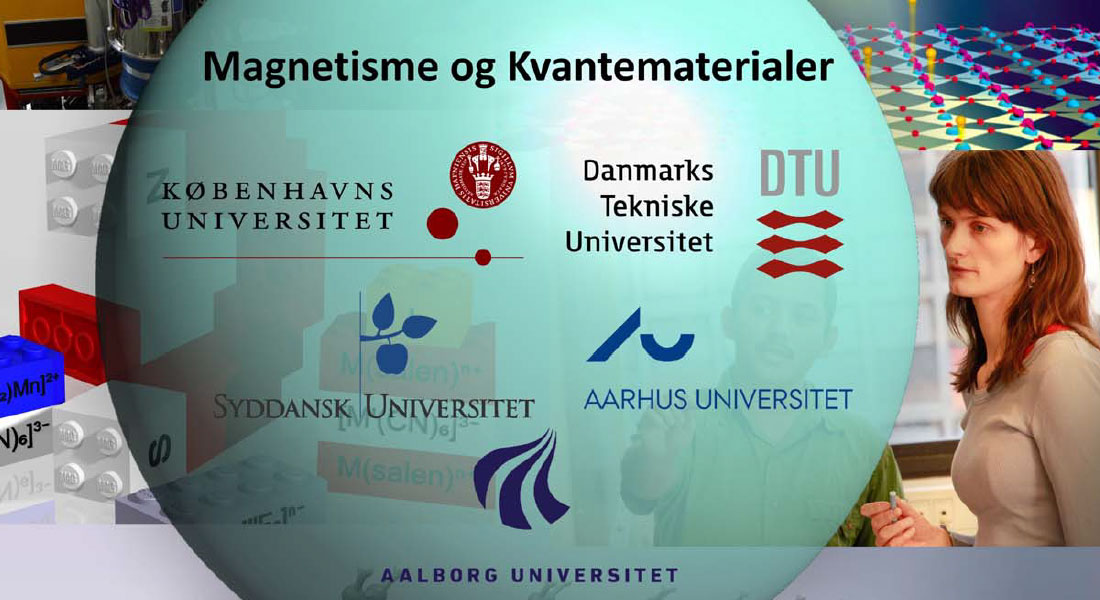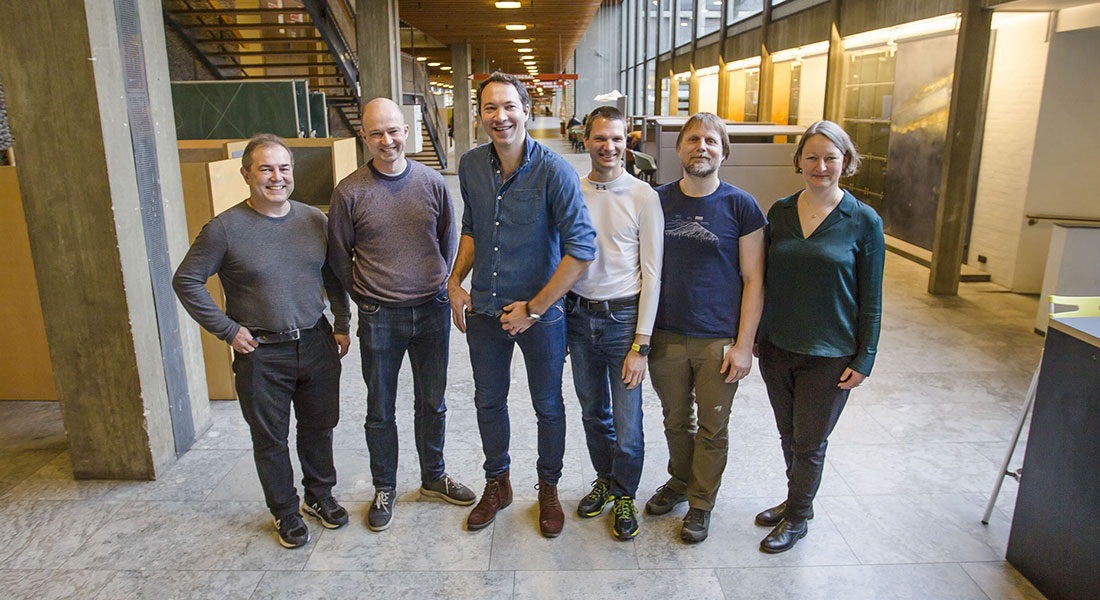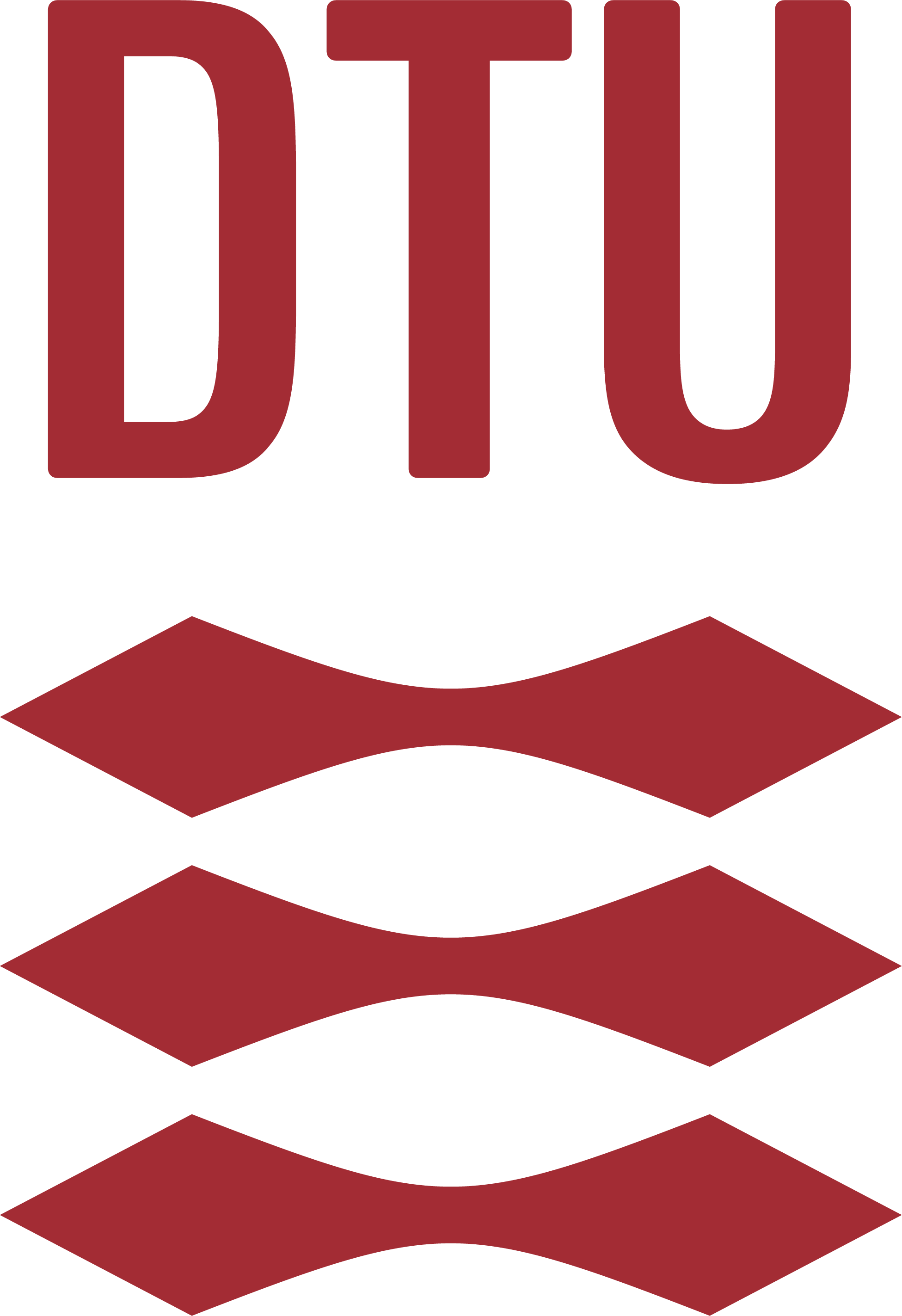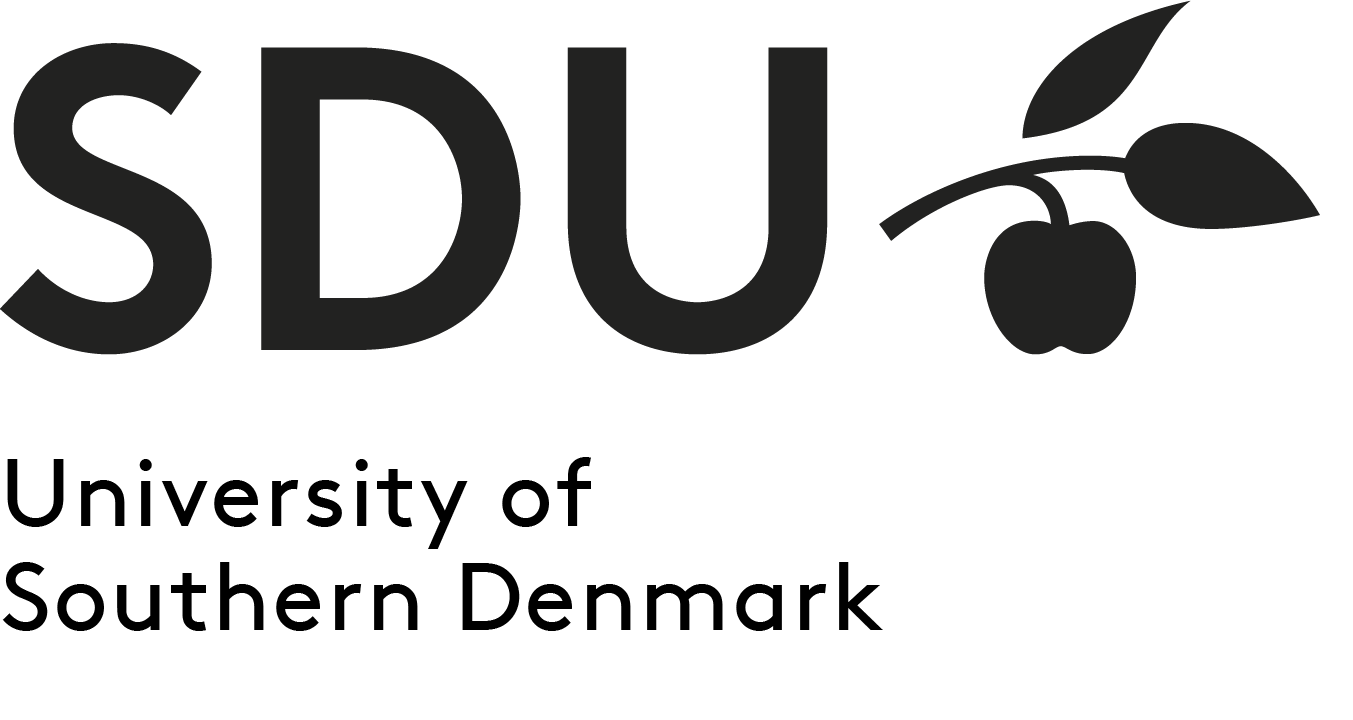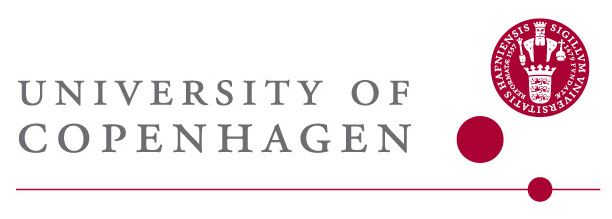The "ESS Lighthouse" Q-MAT is a Danish-based scientific collaboration that will set in place the scientific foundation for future technology based on quantum materials - from sustainability and energy to IT and health.
We aim to design the advanced quantum materials that will lay the foundation for future quantum technology. Having the world leading neutron facility, ESS, in our vicinity, will enable us to understand and thereby control the microscopic mechanisms that govern the properties of quantum materials.
The Lighthouse Q-MAT is a research project, covering the topic of quantum materials, including magnetic and superconducting materials.
Q-MAT is one of (at present) three "ESS Lighthouses" funded by NUFI and is a collaboration between 10 institutes at 6 Danish universities. Q-MAT was inaugurated on 1st December 2020 and runs until the 30th October 2025, with an expected second 5-year period until 2030.
Q-MAT will create the scientific network that will lay the foundation for the materials technology of the future, to be used within sustainability and energy to IT and health technology. We will design and understand the advanced quantum materials that will lay the foundation for the quantum technology of the future. With the world leading materials research facilities, MAX-IV and ESS, at our doorstep, we have a unique opportunity to understand, and thereby control, the microscopic mechanisms that govern the properties of quantum materials.
Future discoveries at these facilities could lead to major scientific breakthroughs, and it is our ambition that Q-MAT will play a leading part herein. We are a strong interdisciplinary team of leading scientists with strong experience in neutron techniques, including people from materials chemistry, theoretical materials science, and the team that designed and is constructing BIFROST (one of the first instruments to be taken in use at the ESS).
As a part of the Lighthouse activities, we will expand the use of neutron scattering in the Danish community of materials research.
Universities and Institutes
-
University of Copenhagen (KU)
Niels Bohr Institute (lead)
Department of Chemistry
Department of Geoscience and Natural Resource Management
- Technical University of Denmark (DTU)
Department of Physics (deputy)
Department of Chemistry
Department of Energy Conversion and Storage
- University of Southern Denmark (SDU)
Department of Physics, Chemistry, and Pharmacy
- University of Aarhus (AU)
Department of Chemistry
- University of Aalborg (AAU)
Department of Materials and Production
- Roskilde University
Department of Science and Environment
Other interested partners and observers
- Danish Technological Institute
- Microsoft Station-Q
- Haldor Topsøe A/S
- ABB AG (CH)
- Linak A/S
- Sintex A/S
- Dovitech A/S
- Dansk Magnetisk Forening
ESS Lighthouse Staff & Students
| Name | Title | |
|---|---|---|
| Bo Brummerstedt Iversen | Professor | bo@chem.au.dk |
| Mogens Christensen | Professor | mch@chem.au.dk |
| Mathias Mørch | Postdoc | mmorch@chem.au.dk |
| Vijay Singh Parmar | Postdoc | vsp@chem.au.dk |
| Amalie Povlsen | PhD | amalie.ling.povlsen@clin.au.dk |
| Hannah Hedegaard Nielsen | PhD | hannah@chem.au.dk |
| Jack Thomas-Hunt | PhD | jth@chem.au.dk |
| Jacob Løwe Valentin | PhD | jval@inano.au.dk |
| Jens Plum Frandsen | PhD | jensplum@inano.au.dk |
| Sofie Stampe Leiszner | PhD | sofiesl@chem.au.dk |
|
|
|
|
| Lars Diekhöner | Ass. Professor | ld@mp.aau.dk |
| Francesco Zamboni | PhD | frza@mp.aau.dk |
DTI (Danish Technological Institute) |
||
| Jacob Overgaard | Acting Director | jaov@teknologisk.dk |
| Nikolaj Zangenberg | Director | nzg@teknologisk.dk |
|
|
||
| Niels Bech Christensen | Senior Scientist | nbch@fysik.dtu.dk |
| Jean-Claude Grivel | Senior Researcher | jean@dtu.dk |
| Rasmus Toft-Petersen | Senior Researcher | rasp@fysik.dtu.dk |
| Cathrine Frandsen | Professor | fraca@fysik.dtu.dk |
| Kasper Steen Pedersen | Professor | kastp@kemi.dtu.dk |
| Nini Pryds | Professor | nipr@dtu.dk |
| Thomas Olsen | Ass. Professor | tolsen@fysik.dtu.dk |
| Naoki Eguchi | PhD | naoeg@kemi.dtu.dk |
| Lise Grüner Hanson | PhD | lisegr@dtu.dk |
| Miriam Varon | Research Engineer | mirva@fysik.dtu.dk |
|
|
||
| Dorthe Posselt | Ass. Professor | dorthe@ruc.dk |
| Christian Kjeldbjerg Kristensen | PhD | chriskr@ruc.dk |
|
|
||
| Hans Jørgen Aagaard Jensen | Professor | hjj@sdu.dk |
| Mickey Sejerup Pedersen | PhD | msep@sdu.dk |
|
|
||
| Jesper Bendix | Professor | bendix@chem.ku.dk |
| Kim Lefmann | Professor | lefmann@nbi.ku.dk |
| Stergios Piligkos | Professor | piligkos@chem.ku.dk |
| Brian Møller Andersen | Associate Professor | bma@nbi.ku.dk |
| Høgni Weihe | Associate Professor | weihe@chem.ku.dk |
| Jens Paaske | Associate Professor | paaske@nbi.ku.dk |
| Andreas Kreisel | Ass. Professor | kreisel@nbi.ku.dk |
| Kirsten M. Ø. Jensen | Ass. Professor | kirsten@chem.ku.dk |
| Kristoffer Szilas | Ass. Professor | krsz@ign.ku.dk |
| Sara Lopez Paz | Ass. Professor | salp@chem.ku.dk |
| Morten Holm Christensen | Postdoc | mchriste@nbi.ku.dk |
| Sonja Holm-Dahlin | Postdoc | sonja@nbi.ku.dk |
| Emma Ynil Lenander | PhD | emma.lenander@nbi.ku.dk |
| Kamaldeep Dalal | PhD | kamaldeep.phy@gmail.com |
| Kristine Krighaar | PhD | rqw129@alumni.ku.dk |
| Keld Theodor | Ass. Engineer | theodor@nbi.ku.dk |
EPFL |
||
| Henrik Rønnow | Professor | henrik.ronnow@epfl.ch |
| Ellen Fogh | Postdoc | ellen.fogh@epfl.ch |
ESS (European Spallation Source) |
||
| Helmut Schober | Director General | helmut.schober@ess.eu |
| Dan Mannix | Instrument Scientist | dan.mannix@esss.se |
| Gregory Tucker | Instrument Data Scientist | gregory.tucker@esss.se |
| Pascale Deen | Instrument Scientist | pascale.deen@esss.se |
| Simon Ward | Scientific Software Developer | Simon.Ward@ess.eu |
PSI and DanScatt |
||
| Jakob Lass | Postdoc | jakob.lass@psi.ch |
The Lighthouse Q-MAT focuses on studies of magnetism and quantum materials, which is relevant for sustainability, energy, health, and IT. Q-MAT will perform research within four closely related types of materials.
Permanent magnets and nanoparticles
Strong permanent magnets are essential e.g. for generators for wind mills. Modern permanent magnets are based on rare earth elements, mainly mined in China, and are among the highest on the EU list of critical raw materials. It is therefore essential to develop inexpensive and environmental friendly alternatives.
The Danish private sector has a large interest in these materials for the purpose of motors, generators, magnetic ball bearings, and for magnetic heating/cooling. Also projects on recycling of rare earth materials are of large interest.
Nanomagnets may soon become relevant for controlling of drug doses in medical treatment, which is a topic that is of high interest in medical technology. Furthermore, Q-MAT partners have projects within environmental technology based upon functional magnetic nanoparticles.
Also the possibility that low-temperature magnetic cooling can be based upon molecular magnets, replacing the traditional helium cooling for e.g. medical MR scanners. In Q-MAT we have 2 PhD positions within magnetic nanoparticles (RUC, DTU)
Multifunctional magnetic materials
In multiferroic and magneto-electric materials, the structural, electrical, and magnetic properties are connected. These materials can soon become highly relevant for IT for sensors and information storage.
For example, it will become possible to store information with an electrical device and read it with a magnetic one - which is an easier technical solution than the present possibilities.
In Q-MAT we have 1 PhD position within the field of multifunctional magnets (AU).
Permanent magnets and nanoparticles
There is presently a strong research push within technologies related to quantum computing and related quantum technologies, with interests from the largest private and public actors. Within this large research programme, materials to store and process quantum information will be of high relevance.
As one example, molecular and single-ion magnets are candidates as information storage for future quantum computers. In the lighthouse there are 2 PhD positions within this topic (AAU and AU).
As another example, magnetic materials can show strong quantum correlations between the individual atomic magnetic moments. This is a potential means of processing quantum information. In Q-MAT we have 3 PhD positions within this field (SDU, DTU, KU).
Superconductors
If electrical energy could be transported without losses, large societal challenges could be overcome within energy and sustainability. Superconducting materials can do exactly this, but does not function at room temperature, unless under extremely high pressures.
The big challenge here is that the detailed mechanism behind superconductivity an many materials is barely understood, and more experimental evidence is needed to establish a proper theory.
In the Q-MAT, theoreticians and experimentalists are collaborating on improving the description of superconducting materials, as well as discovering new superconductors.
In Q-MAT we have 3 PhD projects within the topic of superconductivity (DTU, KU, and KU)
Q-MAT will take advantage of the Danish investment in the European Spallation Source (ESS) by building internationally leading competences and research capacity, to the benefit of basic and applied research.
Q-MAT has a strong scientific and strategic coupling to the design, construction, and operation of ESS and has a wide participation from the Danish community as well as many international connections.
- Q-MAT contains activities and competences for the study of magnetism and quantum materials fra theoretical predictions, materials discovery, utilization of X-ray and neutron facilities, to interpretation and modeling of results.
- Q-MAT will employ 3 young research talents to build up new research and competence areas within theory, discovery, and investigations of novel quantum materials.
- Q-MAT will have participation of the world leading neutron scientism Henrik M. Rønnow, based at EPFL (CH).
- Q-MAT collaborates with leading Danish and international companies, as well as the Danish Technological Institute.
- Q-MAT leads the construction and commissioning of BIFROST, one of the first instrument to operate at ESS. BIFROST will be unique for the study of magnetic and quantum materials.
- Q-MAT will have a close collaboration with the ESS Data Management og Software Center within software for neutron simulation and data analysis.
- Annual Report 2022
- Annual Report 2023
- Annual Report 2024
We recommend that publications supported by QMAT will contain the sentence "The work was supported by the Danish national Committee for Research Infrastructure (NUFI) through the ESS-Lighthouse Q-MAT"
Publications related to Q-MAT topics, 2024
The groups in Q-MAT published 38 peer-reviewed articles related to Q-MAT in 2024.
Publications marked with “*” are co-authored by staff funded by Q-MAT. 14 articles are in this category.
Publications with more than one Q-MAT partner are grouped after the first Q-MAT author.
AU, Chemistry (2; 2*)
* Hannah H. Nielsen, Pol Vilariño, Gemma Rodríguez, Florian Trepard, Olivier Roubeau, Guillem Aromí, David Aguilà
Self-assembly of a supramolecular spin-crossover tetrahedron
Dalton Transactions, 53, 9792-9797 (2024)
* Morch, Mathias I., Thomas-Hunt, Jack, Laursen, Amalie P., Simonsen, Jesper, Frandsen, Jens Plum, Vijayan, Harikrishnan, Christensen, Mogens
Oriented Nanomagnets Originating from Topotactic and Pseudomorphic Reactions
Chemistry of Materials, 36, 1919-1927 (2024)
AAU (2; 0*)
Jensen, I.A. Løge, J. Bendix and L. Diekhöner
An approach for patterned molecular adsorption on ferromagnets, achieved via Moiré superstructures
Physical Chemistry Chemical Physics, 26, 13710 (2024)
I.A. Løge, S. Jensen, J. Bendix and L. Diekhöner
Skabeloner til fremtidens elektronik
Dansk Kemi, 105, 15 2024
(popular article in Danish)
KU, NBI (15; 11*)
* J. Lass, E. Y. Lenander, K. M. L. Krighaar, T. N. Tosic, D. Prabhakaran, P. P. Deen, S. Holm-Janas, K. Lefmann
Characterizing the diffuse continuum excitations in the classical spin liquid h-YMnO3
Physical Review B, 110, 144429 (2024)
Holm-Dahlin, J. Larsen, H. Jacobsen, A. T. Rømer, A.-E. Tutueanu, M. Ahmad, J.-C. Grivel, R. Scheuermann, M. v. Zimmermann, M. Boehm, P. Steffens, Ch. Niedermayer, K. S. Pedersen, N. B. Christensen, B. O. Wells, K. Lefmann, L. Udby
Field-induced electronic phase separation in the high-temperature superconductor La1.94Sr0.06CuO4+y
Physical Review B, 109, 174517 (2024)
Jacobsen, Henrik, Barthkowiak, Marek, Weber, Tobias, Stuhr, Uwe, Roessli, Bertrand, Niedermayer, Christof, Staub, Urs
Phonon dispersion of quantum paraelectric SrTiO3 in electric fields
Physical Review B, 110, 054302 (2024)
Tosic, Tara N., Deen, Pascale P., Simonov, Arkadiy, Spaldin, Nicola A.
Origin of correlated diffuse scattering in the hexagonal manganites
Physical Review Research, 6, L042037 (2024)
* Clara N. Breiø, Andreas Kreisel, Mercè Roig, P. J. Hirschfeld, Brian M. Andersen
Time-reversal symmetry breaking from lattice dislocations in superconductors
Physical Review B, 109, 014505 (2024)
* Henrik S. Røising, Max Geier, Andreas Kreisel, Brian M. Andersen
Thermodynamic transitions and topology of spin-triplet superconductivity: Application to UTe2
Physical Review B, 109, 054521 (2024)
* Brian M. Andersen, Andreas Kreisel, P. J. Hirschfeld
Spontaneous time-reversal symmetry breaking by disorder in superconductors
Phys. 12, 1353425 (2024)
* Guanyang He, Yu Li, Yuxuan Lei, Andreas Kreisel, Brian M. Andersen, Jian Wang
Lateral quantum confinement effect on monolayer high-Tc superconductors
Nano Letters, 24, 7654-7661 (2024)
* Yifu Cao, Chandan Setty, Andreas Kreisel, Laura Fanfarillo, P.J. Hirschfeld
Spin fluctuations in the ultranodal superconducting state of Fe(Se,S)
Physical Review B, 110, L020503 (2024)
* Mercè Roig, Andreas Kreisel, Yue Yu, Brian M. Andersen, Daniel F. Agterberg
Minimal Models for Altermagnetism
Physical Review B, 110, 144412 (2024)
* Yi Dai, Andreas Kreisel, Brian M. Andersen
Existence of Hebel-Slichter peak in unconventional kagome superconductors
Physical Review B, 110, 144516 (2024)
* Henrik S. Røising, Andreas Kreisel, Brian M. Andersen
Nonlocal electrodynamics and the penetration depth of superconducting Sr2RuO4
Physical Review B, 110, 094511 (2024)
* Subhojit Roy, Andreas Kreisel, Brian M. Andersen, Shantanu Mukherjee
Unconventional pairing in Ising superconductors: Application to monolayer NbSe2
2D Mater. 12, 015004 (2024)
* Adrian Valadkhani, Jonas B. Profe, Andreas Kreisel, P. J. Hirschfeld, Roser Valentí
Why Scanning Tunneling Microscopy on Sr2RuO4 sometimes doesn't see the superconducting gap
npj Quantum Materials, 9, 78 (2024)
* Hanbin Deng, Guowei Liu, Z. Guguchia, Tianyu Yang, Jinjin Liu, Zhiwei Wang, Yaofeng Xie, Sen
Shao, Haiyang Ma, William Liège, Frédéric Bourdarot, Xiao-Yu Yan, Hailang Qin, C. Mielke III, R.
Khasanov, H. Luetkens, Xianxin Wu, Guoqing Chang, Jianpeng Liu, Morten Holm Christensen,
Andreas Kreisel, Brian Møller Andersen, Wen Huang, Yue Zhao, Philippe Bourges, Yugui Yao,
Pengcheng Dai, Jia-Xin Yin
Evidence for time-reversal symmetry-breaking kagome superconductivity
Nat. Mat. 23, 1639 (2024)
KU, Chem (3; 1*)
Kirsch, Andrea, Strapasson, Guilherme B., Lefeld, Niels, Gogolin, Mathias, Videbaek, Mark C., Banerjee, Soham, Bordallo, Heloisa N, Jensen, Kirsten M.
Control of Crystallization Pathways in the BiFeO3-Bi2Fe4O9 System
Chemistry of Materials, 37, 338-348 (2024)
* López-Paz, S. A., Sari, Dita P., Sanchez-Marcos, Jorge, Liborio, Leandro, Sturniolo, Simone, Ritter, Clemens, Hillier, Adrian D., Alario-Franco, Miguel A.
Triple Magnetic Stacking in an Iron-Containing Cuprate with Cu-Fe-Cu Magnetic Blocks
Chemistry of Materials, 36, 8199−8207 (2024)
Tacconi, Leonardo, Manvell, Anna S., Briganti, Matteo, Czernia, Dominik, Weihe, Hogni, Konieczny, Piotr, Bendix, Jesper, Perfetti, Mauro
Exploiting High Order Magnetic Anisotropy for Advanced Magnetocaloric Refrigerants Angewandte Chemie, 64, e202417582 (2024)
DTU, Physics (15; 0*)
Oppliger, M. M. Denner, J. Küspert, R. Frison, Q. Wang, A. Morawietz, O. Ivashko, A.-C. Dippel, M. v. Zimmermann, I. Biało, L. Martinelli, B. Fauque, J. Choi, M. Garcia-Fernandez, K-J. Chou, N. B. Christensen, T. Kurosawa, N. Momono, M. Oda, F. D. Natterer, M. H. Fischer, T. Neupert, J. Chang
Weak-signal extraction enabled by deep-neural-network denoising of diffraction data
Nature Machine Intelligence 6, 180 (2024)
Holm-Janas, M. Akaki, E. Fogh, T. Kihara, M. D. Le, P. C. Forino, S. E. Nikitin, T. Fennell, A. Painganoor, D. Vaknin, M. Watanabe, N. B. Christensen, H. Nojiri, R. Toft-Petersen
Magnetic structure and magnetoelectric properties of the spin-flip phase in LiFePO4
Physical Review B, 109, 174413 (2024).
Wang, S. Mustafi, E. Fogh, N. Astrakhantsev, Z. He, I. Biało, Y. Chan, L. Martinelli, M. Horio, O. Ivashko, N. E. Shaik, K. v. Arx, Y. Sassa, E. Paris, M. H. Fischer, Y. Tseng, N. B. Christensen, A. Galdi, D. G. Schlom, K. M. Shen, T. Schmitt, H. M. Rønnow, J. Chang
Magnon Interactions in a Moderately Correlated Mott Insulator
Nat. Commun. 15, 5348 (2024)
Küspert, I. Biało, R. Frison, A. Morawietz, L. Martinelli, J. Choi, D. Bucher, O. Ivashko, M. v. Zimmermann, N. B. Christensen, D. G. Mazzone, G. Simutis, A. A. Turrini, L. Thomarat, D. W. Tam, M. Janoschek, T. Kurosawa, N. Momono, M. Oda, Q. Wang, J. Chang
Engineering Phase Competition between Stripe Order and Superconductivity in La1.88Sr0.12CuO4
Commun. Phys. 7, 225 (2024).
Guchhait, A. Painganoor, S. S. Islam, J. Sichelschmidt, M. D. Le, N. B. Christensen, R. Nath. Magnetic and crystal electric field studies of the rare earth based square lattice antiferromagnet NdKNaNbO5, Physical Review B 110, 114434 (2024).
L. Durhuus, M. Beleggia and C. Frandsen
Magnetic and Viscous dynamics of spheroidal nanoparticles
Physical Review B, 110. 144425 (2024)
L. Durhuus, M. Beleggia and C. Frandsen
Conservation laws for interacting magnetic nanoparticles at finite temperature
Physical Review B 109. 054421 (2024)
Skovhus and T. Olsen
Minority magnons and mode branching in monolayer Fe3GeTe2
Physical Review B, 110 (16), 165155
Ovesen and T. Olsen
Orbital magnetization in two-dimensional materials from high-throughput computational screening
2D Materials, 11 (4), 045010
Sødequist and T. Olsen
Magnetic order in the computational 2D materials database (C2DB) from high throughput spin spiral calculations
npj Computational Materials, 10 (1), 170
Olsen
Antiferromagnetism in two-dimensional materials: progress and computational challenges
2D Materials, 11 (3), 033005
Qiu, Y. Han, K. Noori, Z. Chen, M. Kashchenko, L. Lin, T. Olsen, J Li, et al.
Evidence for electron–hole crystals in a Mott insulator
Nature Materials, 23, 1055
Mangeri, M. Ovesen, and T. Olsen
Linear magnetoelectricity in the Zintl phase pnictides (Ba, Ca, Sr)(P, As, Sb) from first-principles calculations
Physical Review B, 109 (21), 214404
Sødequist and T. Olsen
Two-dimensional altermagnets from high throughput computational screening: Symmetry requirements, chiral magnons, and spin-orbit effects
Applied Physics Letters, 124, 182409
SK Chaluvadi, SP Chalil, A Jana, D Dagur, G Vinai, F Motti, J Fujii, et al.
Uncovering the Lowest Thickness Limit for Room-Temperature Ferromagnetism of Cr1. 6Te2 Nano Letters, 24, 7601
DTU, Chemistry (1; 0*)
Dunstan, Maja A., Manvell, Anna S., Yutronkie, Nathan J., Aribot, Frederic, Bendix, Jesper, Rogalev, Andrei, Pedersen, Kasper S.
Tunable valence tautomerism in lanthanide-organic alloys
Nature Chemistry, 16, 735 (2024)
RUC and SDU had no Q-MAT related publications in 2024.
P. Shyam, F.H. Gjørup, M. I. Mørch, A.P. Laursen, A. Z. Eikeland, I. Kantor, M. R. V. Jørgensen, & M. Christensen
Sintering in seconds, elucidated by millisecond in situ diffraction
Applied Materials Today 35, 101960 (Published December 2023)
C. G. Knudsen, M. Mørch and M. Christensen
Texture formation in W-type hexaferrite by cold compaction of non-magnetic interacting anisotropic shaped precursor
crystallites
Dalton Trans. 52, 281-289 (Published December 2023)
E. Nocerino, U. H.-A. Stuhr, I. Sanlorenzo, F. Mazza, D. Mazzone, S. Hasegawa, S. Asai, T. Masuda, A. Minelli, Z.
Hossain, A. Thamizhavel, K. Lefmann, Y. Sassa, and M. Månsson
Q-dependent Electron-Phonon Coupling Induced Phonon Renormalization and Non-Conventional Critical Behavior in
the CDW Superconductor LaPt2Si2
J. Sci.: Adv. Mater. Dev. 8, 100621 (Published December 2023)
* Yifu Cao, Chandan Setty, Laura Fanfarillo, Andreas Kreisel, P.J. Hirschfeld
Microscopic origin of ultranodal superconducting states in spin-1/2 systems
Phys. Rev. B 108, 224506 (Published December 2023)
* Sofie Castro Holbæk, Morten H. Christensen, Andreas Kreisel, Brian M. Andersen
Unconventional superconductivity protected from disorder on the kagome lattice
Phys. Rev. B 108, 144508 (Published October 2023)
A. Ørsted, S.V. Salling and L. Diekhöner
Unraveling the electronic structure of cobalt oxide nanoislands on Au(111)
Physical Review B, 108, 165424 (Published October 2023)
* L. Ø. Sandberg, M. L. Haubro, K. M. L. Krighaar, R. Edberg, I. M. B. Fjellvåg, M. Guthrie, A. T. Holmes, L. Mangin-
Thro, A. Wildes, M. Boehm, P. Henelius, K. Lefmann, P. P. Deen
Design, calibration, and performance of a uniaxial pressure cell for neutron scattering studies of quantum magnetism
Rev. Sci. Instr. 94, 103901 (Published October 2023)
Joachim Marco Hermansen, Frederik Laust Durhuus, Cathrine Frandsen, Marco Belaggia, Christian R. H. Bahl, R. Bjørk
Magnetic levitation by rotation
Physical Review Applied 20, 15 (044036) (Published October 2023)
E. Nocerino, I. Sanlorenzo, K. Papadopulos, N. Trnjanin, A. Geresdi, M. Medarde, J. Lyu, M. Klein Yannick, A. Minelli,
Z. Hossain, A. Thamizhavel, A. K. Inge, K. Lefmann, O. Ivashko, M. von Zimmermann, Y. Sassa, and M. Månsson
Multiple unconventional charge density wave transitions in LaPt2Si2 superconductor clarified with high-energy X-ray diffraction
Communication Materials 4, 77 (Published September 2023)
S. Holm-Janas, S. L. Lolk, A. B. A. Andersen, T. Guidi, D. Voneshen, I. Zivkovic, U. G. Nielsen, and K. Lefmann
Diffuse spin waves, zero modes and cluster excitations in the spin-3/2 kagomé antiferromagnet chromium jarosite,
KCr3(OD)6(SO4)2
Phys. Rev. B 108, 064432 (Published August 2023)
V. S. Parmar, A. M. Thiel, M. S. Norre, J. Overgaard
High-Pressure Investigation of a Five-Coordinate Dy Single-Molecule Magnet
Crystal Growth & Design, 23(9), 6410–6417 (Published August 2023)
Pin Lyu, Joachim Sødequist, Xiaoyu Sheng, Zhizhan Qiu, Anton Tadich, Qile Li, Mark T Edmonds, Meng Zhao, Jesús
Redondo, Martin Švec, Peng Song, Thomas Olsen, Jiong Lu
Gate-Tunable Renormalization of Spin-Correlated Flat-Band States and Bandgap in a 2D Magnetic Insulator
ACS nano, 17, 15441-15448 (Published August 2023)
B. Muzzi, M. Albino, M. Petrecca, C. Innocenti, C. de Julián Fernández, G. Bertoni, M. R. Ibarra, M. Christensen, M.
Avdeev, C. Marquina, & C. Sangregorio
Defect-Engineering by Solvent Mediated Mild Oxidation as a Tool to Induce Exchange Bias in Metal Doped Ferrites
Small Methods 7, 11, 2300647 (Published August 2023)
* Sananda Biswas, Andreas Kreisel, Adrian Valadkhani, Matteo Dürrnagel, Tilman Schwemmer, Ronny Thomale, Roser
Valentí, Igor I. Mazin
Hybrid s-wave superconductivity in CrB2
Phys. Rev. B 108, L020501 (Published July 2023)
Ellen Fogh, Bastian Klemke, Manfred Reehuis, Philippe Bourges, Christof Niedermayer, Sonja Holm-Dahlin, Oksana
Zaharko, Jürg Schefer, Andreas Bott Kristensen, Michael Korning Sørensen, S. Paeckel, Kasper Steen Pedersen, Rasmus
Eilkær Hansen, Alexandre Pages, Kimmie Katrine Moerner, Giulia Meucci, Jian-Rui Soh, Alesandro Bombardi, David
Vaknin, Henrik Moodysson Rønnow, Olav Fredrik Syljuåsen, Niels Bech Christensen, Rasmus Toft-Petersen
Tuning Magnetoelectricity in a mixed-anisotropy antiferromagnet
Nature Commun. 14, 3408 (Published June 2023)
M. Mørch, M. Christensen
Controlling the magnetic structure in W-type hexaferrites
J. Appl. Cryst. 56, 597–602 (Published June 2023)
H. Vijayan, A. P. Laursen, M. Stingaciu, P. Shyam, F. H. Gjørup, M. Christensen
High Performance Hexaferrite Ceramic Magnets made from Nanoplatelets of Ferrihydrite by High Temperature Calcination for Permanent Magnet Applications
ACS Appl. Nano Mater. 10, 8156–8167 (Published May 2023)
* Weijiong Chen, Clara Neerup Breiø, Freek Massee, M.P. Allan, C. Petrovic, J.C. Séamus Davis, P.J. Hirschfeld, Brian
M. Andersen, Andreas Kreisel
Interplay of Hidden Orbital Order and Superconductivity in CeCoIn5
Nature Communications 14, 2984 (Published May 2023)
* A.-E. Tutueanu, M. E. Kamminga, T. B. Tejsner, H. Jacobsen, H. W. Hansen, M.-E. Lacatusu, J. Baas, K. L. Eliasen, J.-
C. Grivel, Y. Sassa, N. B. Christensen, P. Steffens, M. Boehm, A. Piovano, K. Lefmann, A. T. Rømer
Gradual emergence of superconductivity in underdoped La2-xSrxCuO4
Phys. Rev. B 107, 174514 (Published May 2023)
Joachim Sødequist, Thomas Olsen
Type II multiferroic order in two-dimensional transition metal halides from first principles spin-spiral calculations
2D Materials, 10, 035016 (Published May 2023)
Lise Grüner Hanson*, Bianca Laura Hansen, Thomas Veile, Mathias Zambach, Niels Bech Christensen, Cathrine
Frandsen
The Impact of Sample Insulation on Estimating the Heating Power of Magnetic Nanoparticles by AC Calorimetry
IEEE Magnetics Letters, vol. 14, pp. 1-5, 2023, Art no. 6100505 (Published May 2023)
* M. E. Kamminga, K. M. L. Krighaar, A. T. Rømer, L. Ø. Sandberg, P. P. Deen, M. Boehm, G. Gu, J. M. Tranquada, K.
Lefmann
Evolution of magnetic stripes under uniaxial pressure in La1.885Ba0.115CuO4 studied by neutron scattering
Phys. Rev. B 107, 144506 (Published April 2023)
* Mainak Pal, Andreas Kreisel, P.J. Hirschfeld
Topological superconductivity driven by correlations and linear defects in multiband superconductors
Phys. Rev. B 107, 134503 (Published April 2023)
* Mainak Pal, Andreas Kreisel, W.A. Atkinson, P.J. Hirschfeld
Simulating Superconducting Properties of Overdoped Cuprates: the Role of Inhomogeneity
Phys. Rev. B 107, 144501 (Published April 2023)
* Shinibali Bhattacharyya, Andreas Kreisel, X. Kong, T. Berlijn, Astrid T. Rømer, Brian M. Andersen, P. J. Hirschfeld
Superconducting gap symmetry from Bogoliubov quasiparticle interference analysis on Sr2RuO4
Phys. Rev. B 107, 144505 (Published April 2023)
L. Diekhöner, C. S. Meyer and S. Eiskjær
The magnetic field strength and the force distance dependency of the magnetically controlled growing rods used for early
onset scoliosis
Scientific Reports, 13, 3045 (Published February 2023)
V. S. Parmar, A. M. Thiel, R. Nabi, G. K. Gransbury, M. S. Norre, P. Evans, S. C. Corner, J. M. Skelton, N. F. Chilton, D.
P. Mills, and J. Overgaard
Influence of pressure on a dysprosocenium single-molecule magnet
Chemical Communications 59(18), 2656–2659 (Published February 2023)
* J. Lass, H. Jacobsen, K.M.L. Krighaar, D. Graf, F. Groitl, F. Herzog, M. Yamada, C. Kägi, R.A. Müller, R. Bürge, M.
Schild, M. S. Lehmann, A. Bollhalder, P. Keller, M. Bartkowiak, U. Filges, U. Greuter, G. Theidel, H. M. Rønnow, Ch.
Niedermayer, D.G. Mazzone
Commissioning of the novel Continuous Angle Multi-energy Analysis spectrometer at the Paul Scherrer Institut
Review of Scientific Instruments 94, 023302 (Published February 2023)
* M. E. Kamminga, J. Okkels Birk, H. Jacobsen, J. Lass, T. L. Koch, N. B. Christensen, Ch. Niedermayer, L. Keller, L.
Theil Kuhn, E. T. Ulrikkeholm, E. Brok, C. Frandsen, K. Lefmann
Nanocriticality in the magnetic phase transition of CoO nanoparticles
Physical Review B 107, 064424 (Published February 2023)
H. Chen, A. S. Manvell, M. Kubus, M. A Dunstan, G. Lorusso, D. Gracia, M. S. B. Jørgensen, S. Kegnæs, F. Wilhelm, A.
Rogalev, M. Evangelisti, K. S. Pedersen
Towards frustration in Eu(II) Archimedean tessellations
Chem. Commun. 2023, 59, 1609 (“HOT Article”) (Published February 2023)
S. K. Gupta, H. H. Nielsen, A. M. Thiel, E. A. Klahn, E. Feng, H. B. Cao, T. C. Hansen, E. Lelièvre-Berna, A. Gukasov,
I. Kibalin, S. Dechert, S. Demeshko, J. Overgaard, F. Meyer
Multi-Technique Experimental Benchmarking of the Local Magnetic Anisotropy of a Cobalt(II) Single-Ion Magnet
JACS Au, 3(2), 429–440 (Published January 2023)
* Yu Li, Dingyu Shen, Andreas Kreisel, Cheng Chen, Tianheng Wei, Xiaotong Xu, Jian Wang
Anisotropic gap structure and sign reversal symmetry in monolayer Fe(Se,Te)
Nano Lett. 23, 140 (Published January 2023)
Frederik L Durhuus, Thorbjørn Skovhus, Thomas Olsen
Plane wave implementation of the magnetic force theorem for magnetic exchange constants: application to bulk Fe, Co and Ni
Journal of Physics: Condensed Matter, 35, 105802 (Published January 2023)
Ellen Fogh, Bastian Klemke, Alexandre Pages, J. Li, David Vaknin, Niels Bech Christensen, Rasmus Toft-Petersen
The magnetoelectric effect in LiFePO4 – revisited
Physica B 648, 414380 (Published January 2023)
A. B. A. Andersen, R. Tang Christiansen, S. Holm-Janas, A. S. Manvell, K. S. Pedersen, D. Sheptyakov, J. P. Embs, H.
Jacobsen, E. Dachs, J. Vaara, K. Lefmann, U. G. Nielsen
Understanding the Magnetic Properties of MAl4(OH)12SO4·3H2O with M = Co2+, Ni2+, and Cu2+ by a Combined Experimental and Computational Approach
PCCP 25, 3309-3322 (Published January 2023)
N. P.L. Magnard, A.S. Anker, O. Aalling-Frederiksen, A.Kirsch, K.M.Ø. Jensen. Characterisation of intergrowth in metal oxide materials using structure-mining: the case of γ-MnO2. Dalton Trans. 2022, 51, 17150 (Published 20 Sep 2022)
U. B. Hansen, O. F. Syljuåsen, J. Jensen, T. K. Schäffer, C. R. Andersen, M. Boehm, J. A. Rodriguez-Rivera, N. B. Christensen & K. Lefmann. Magnetic Bloch oscillations and domain wall dynamics in a near-Ising ferromagnetic chain. Nature Communications,13, 2547 (Published 10 May 2022)
C. N. Breiø, P. J. Hirschfeld, and B. M. Andersen Supercurrents and spontaneous time-reversal symmetry breaking by nonmagnetic disorder in unconventional superconductors. Phys. Rev. B 105, 014504 (Published 4 January 2022)
L. Ø. Sandberg, R. Edberg, I.-M. B. Bakke, K. S. Pedersen, G. Balaskrishna, M. C. Hatnean, L. Mangin-Thro, A. Wildes, B. Fåk, G. Ehlers, G. Sala, P. Henelius, K. Lefmann, and P. P. Deen, Quantum spin liquid behaviour in the frustrated magnet YbGa garnet, accepted for Physical Review B; arXiv:2005.10605
P. K. Willendrup and K. Lefmann, McStas (ii): An overview of components, their use, and advice for user contributions, Review, Journal of Neutron Research 23, 7-27 (Published 23 April 2021)
J. Lass, M. E. Bøggild, P. Hedegård, and K. Lefmann, Multinomial, Poisson, and Gaussian statistics in count data analysis, Journal of Neutron Research 23, 69-92 (Published 23 April 2021)
S. Janas, J. Lass, A-E. Tutueanu, M. L. Haubro, C. Niedermayer, U. Stuhr, G. Xu, D. Prabhakaran, P. P. Deen, S. Holm-Dahlin, and K. Lefmann, Classical spin liquid or extended critical range in h-YMnO3 ?,Phys. Rev. Lett. 126, 107203 (Published 11 March 2021)
K. Björnson, A. Kreisel, A. T. Rømer, & B. M. Andersen. Orbital-dependent self-energy effects and consequences for the superconducting gap structure in multiorbital correlated electron systems, Phys. Rev. B 103, 024508 (Published 12 January 2021)
D. Chatzopoulos, D. Cho, K. M. Bastiaans, G. O. Steffensen, D. Bouwmeester, A. Akbari, G. Gu, J. Paaske, B. M. Andersen & M. P. Allan. Spatially dispersing Yu-Shiba-Rusinov states in the unconventional superconductor FeTe0.55Se0.45, Nature Communications 12, 298 (Published 12 January 2021)
Universitetsparken 5, HCØ, Building 3
2100 København Ø
Email: lefmann@nbi.ku.dk
-
Niels Bech Christensen, Associate professor, Physics, DTU (deputy),
Email: nbch@fysik.dtu.dk
Phone: +45 45 25 32 06 -
Jesper Bendix, Professor, Chemistry, KU
Email: bendix@kiku.dk -
Brian Møller Andersen, Associate Professor, NBI, KU
Email: bma@nbi.ku.dk -
Henrik Rønnow, Physics, EPFL (Schweiz) - and adjoint professor NBI, KU
Email: henrik.ronnow@epfl.ch
Contact:
2100 København Ø

